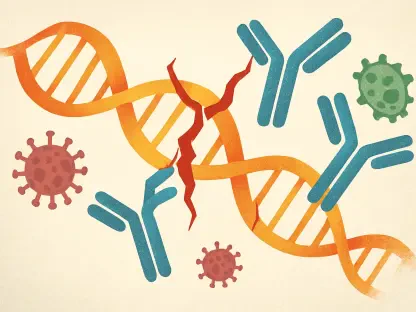Imagine a world where the air we breathe, the water we drink, and the food we eat are all unchecked, teeming with unseen hazards. For many, this is a nightmarish scenario, yet it highlights the importance of regulatory bodies such as the Environmental Protection Agency (EPA) and the Food and Drug Administration (FDA). Despite their often underappreciated work, these agencies play an indispensable role in safeguarding public health and ensuring consumer safety by evaluating and mitigating risks associated with chemicals and food additives found in everyday products.
Recent Actions and Health Implications
EPA’s Ban on Hazardous Chemicals
In a significant regulatory move, the EPA recently proposed banning trichloroethylene (TCE) and tetrachloroethylene (Perc), hazardous chemicals prevalent in the dry cleaning industry. These substances have been scientifically linked to severe health implications, including cancer and nervous system disorders. The decision to move towards a ban comes after years of rigorous research and laboratory testing, underscoring the agency’s commitment to protecting public health. This action marks a critical step in reducing exposure to harmful toxins, which can have far-reaching consequences for both human health and the environment.
While the ban on these chemicals has been met with approval by public health advocates, it also raised concerns about the economic impact on industries that have long relied on them. However, the EPA’s decision highlights a broader narrative: the importance of prioritizing public health over economic convenience. By eliminating highly toxic substances from widespread use, the agency aims to foster a safer environment for future generations, addressing health risks that might otherwise persist unnoticed. The EPA’s proactive stance exemplifies the vital role regulatory bodies play in identifying and mitigating threats that could go undetected by the general public.
FDA’s Regulation on Red Dye No. 3
Concurrently, the FDA is taking significant steps to limit the use of red dye No. 3, a common food additive with known health risks. This additive, already banned in the European Union, has been associated with attention disorders in children and cancers in animals. Through this regulatory effort, the FDA addresses concerns that have long been voiced by health experts and consumer advocates. The agency’s move to limit red dye No. 3 highlights its ongoing commitment to ensuring that food products are safe and free from harmful substances.
The FDA’s decision is driven by extensive scientific research and peer-reviewed data, reinforcing the need for evidence-based regulations. By actively updating its policies to reflect current scientific understanding, the FDA aims to protect consumers, especially vulnerable populations such as children. This measure also underscores the broader mission of regulatory agencies: to scrutinize and control substances that pose potential hazards, thereby upholding high standards of public health and safety. The FDA’s actions remind the public of the unseen but critical efforts undertaken to safeguard the foods and medicines we consume daily.
The Role of Regulatory Agencies in Ensuring Safety
Historical Context and Efficacy of Regulation
Established under the leadership of Republican presidents Nixon and Teddy Roosevelt, the EPA and FDA were created to fill crucial roles in public health and environmental protection. Despite their significant contributions, these agencies often work behind the scenes, their efforts largely unnoticed by the public. The establishment of the EPA and FDA was a recognition of the necessity for informed and scientific oversight in safeguarding health and safety standards. Over the decades, these agencies have developed robust processes involving comprehensive research, lab testing, and peer reviews to ensure the effectiveness of their regulations.
The efficacy of the U.S. regulatory system lies in its ability to adapt and respond to new scientific findings and emerging threats. Such adaptability ensures that regulations remain relevant and effective in addressing contemporary health and safety issues. However, the agencies’ work is not without challenges. They must navigate pressures from various stakeholders, including industry interests and political influences, while maintaining their commitment to evidence-based policymaking. This delicate balance is crucial for the sustained effectiveness of regulations designed to protect public health and the environment.
Challenges and the Need for Balanced Regulation
Recent judicial actions, such as the Supreme Court’s overturning of the Chevron precedent, have posed additional challenges to the regulatory framework in the United States. This decision has shifted significant decision-making power to legislators and judges, who may lack specialized knowledge in fields regulated by agencies like the EPA and FDA. Such a shift underscores the need for a balanced approach to regulation, where expert agencies are empowered to make informed decisions based on scientific evidence and public health principles. Regulatory agencies must remain well-resourced and independent to resist undue influence and act in the public’s best interest.
The weakening of regulatory agencies could lead to significant risks for public health and safety, potentially reverting to a state where harmful substances go unchecked. It is essential for stakeholders, including policymakers and the public, to recognize the value of strong, science-based regulations. By supporting empowered and well-funded regulatory agencies, society can ensure that potential hazards are identified and managed effectively, maintaining high standards for food, air, water, and consumer products. Balanced regulatory frameworks not only protect public health but also promote trust and accountability in the systems designed to safeguard it.
Conclusion and Future Considerations
Imagine living in a world where the air is full of contaminants, the water is polluted, and the food we eat is hazardous due to unchecked substances. For many people, this thought is terrifying, yet it underscores the vital role played by regulatory bodies like the Environmental Protection Agency (EPA) and the Food and Drug Administration (FDA). These agencies are often taken for granted, but they are crucial in protecting public health and ensuring the safety of consumers. By evaluating and controlling risks posed by chemicals and food additives in everyday products, they prevent potential health crises and environmental damage. The EPA works relentlessly to keep our air and water clean, while the FDA ensures that our food and medicines are safe for consumption. Their efforts help to maintain the quality of life we enjoy, preventing harmful substances from going unnoticed and untreated. Without these diligent organizations, the quality and safety of the resources we rely on daily would be jeopardized, endangering both our health and the environment.









